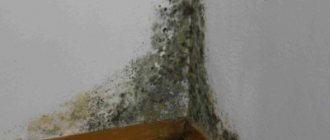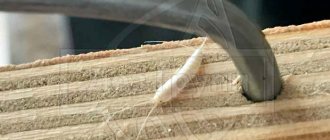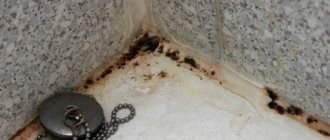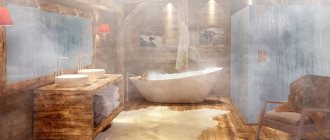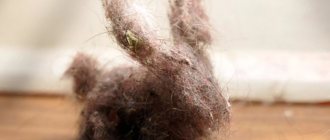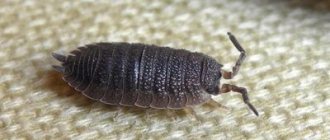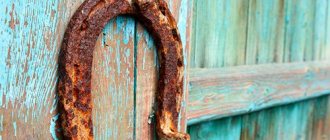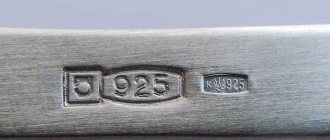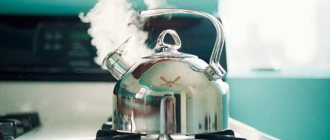Waffle iron Kitfort KT-1611, yellow
1790 ₽ More details
Waffle iron Kitfort KT-1611, yellow
1790 ₽ More details
Kitfort coffee machines
Many citizens living in private houses or apartments may find mold on the walls. Mold is a collection of microscopic fungi. As a result of their growth, large areas of damage can form in the form of spots, crusts, plaque or point elements. There is a wide variety of these microorganisms. Not everyone knows how to deal with black mold on walls. It is always a sign of a violation of the operation of the premises, irrational ventilation, or incorrect construction technology. Of great importance is that over time it can destroy building materials and cause corrosion, not to mention its unattractive appearance.
Mold appears in damp, poorly ventilated areas.
Mold on walls comes in a variety of colors, from light to brown. Black mold is the most common occurrence. Almost always it occurs suddenly with the appearance of black dots or spots. Wood suffers more from this disease, and other materials less often. It is important that fungi, if they accumulate significantly, can negatively affect the health and well-being of residents. It is known that mold spores can circulate in the indoor air, which contributes to their entry into the respiratory tract. Let us consider in detail what folk remedies and antiseptics are used to combat this disease.
Where does it get into the house from?
Such mold can enter a house or apartment through open windows, balconies, blown in by the wind, or perhaps through ventilation openings. Frozen mold cells seem to be just waiting for an optimal habitat for them to appear in the bathroom or kitchen, or somewhere else - high humidity and a temperature of at least 10-12 degrees Celsius. She really loves musty rooms where there is no frequent airing or good ventilation.
Therefore, it is extremely important to regularly ventilate your home or repair the ventilation shafts. Where condensation accumulates, mold often forms as well.
Therefore, the pipes of all communications in an apartment or house need to be properly insulated. Or insulate the walls themselves outside the house.
Reasons for appearance
In order to understand how to deal with black mold, you should find out and eliminate the cause of its appearance.
Causes:
- Increased humidity in the room.
- Ground dampness.
- Leaking pipes.
- Poor heating.
- Freezing of brick or concrete.
It can occur as a result of improper wallpapering. If you paste wallpaper on still fresh plaster, this will create favorable conditions for the growth of fungus. It can appear almost anywhere, on walls, ceilings, in the basement, but most often it can be found in the bathroom or shower stall due to high humidity.
How to get rid of black mold
The first step is to thoroughly dry the apartment and ensure good ventilation. Since high humidity, especially above 80%, is the most favorable environment for the development of mold.
To get rid of fungus on the walls, it is not enough just to remove it and make superficial cosmetic repairs. Usually the parasite eats quite deeply into the structure of plaster, wood and other material on which it forms, so after simple cleaning and painting, mold can still appear in the same place over time and continue to grow. To avoid this, very careful repairs must be made.
If the room is in unfavorable conditions and has a predisposition to the formation of fungus, it is worth abandoning the decoration with wallpaper and tiles, in which mold can grow. In this case, it is best to use paint with the addition of special anti-fungal agents.
The most important thing is to treat the affected surface and everything adjacent to it with antifungal agents. In hardware stores you can find a wide variety of different solutions and preparations that will not only quickly get rid of mold, but also prevent its further appearance. For the effect to be reliable and last a long time, the product should be applied in two or three layers.
It is important to remember that any measures to remove mold and treat with antifungal agents are best carried out with gloves and a respirator, as well as in clothes that you don’t mind getting rid of later
These precautions are necessary to prevent the subsequent spread of the fungus.
Among folk remedies for black mold, a 9% vinegar solution is quite popular, which needs to be used to wipe off contaminated surfaces in the apartment. Also, some people use various bleaches against fungus, but they may not always be quite effective. In addition, they are not entirely beneficial for the body and, like mold, can be dangerous for the body, so it is best to use specialized preparations.
Modern anti-fungal remedies cope very well with this problem and allow you to get rid of it for a long time, unlike a solution of vinegar and bleach. However, it is still worth periodically checking areas where mold may appear in order to notice the problem in time and prevent it from spreading.
If the area affected by the fungus is too large, you should not try to get rid of the mold yourself. In this case, it is better to contact specialists. They will thoroughly treat all surfaces and guarantee that mold will not appear in this area again. They will also be able to advise you on the measures that need to be taken to prevent the formation of fungus.
Sineva and actinomycetes
Blue stain mainly appears on wooden surfaces and has a bluish tint.
Blue mold is mold on the walls of residential premises; it spreads mainly on wooden surfaces. Many people think that bluish or greenish spots are a purely cosmetic defect. But this is far from true: mold easily penetrates even through layers of paint, severely destroying walls and other structures. The room becomes damp, and colonies of other types of fungi appear. Headaches and allergic reactions begin that do not go away for a long time. The health of all residents is deteriorating. You can determine that it is a fungus by the smell of mold and dampness. In this case, it is necessary to examine all wooden surfaces to detect characteristic blue spots; they are noticeable quite well. It happens that the mold has penetrated deeply and it is necessary to completely cut out part of the wood to remove it.
Rot exists in the form of brown, white and bacterial. Mold on walls of the bacterial type is dangerous, since rot affects the respiratory organs, skin, and mucous membranes. To get rid of it, quite serious treatment with antibiotics is often required, and such a disease is difficult to detect. Diagnoses such as asthma and pulmonary edema are often made, but in fact the lungs are affected by mold spores.
An unusual fungus on the walls in the form of actinomycetes is a formation similar between algae and mushrooms. Such fungi affect the wall material, they penetrate deeply, and it is almost impossible to get rid of them. Most often they affect wooden walls, which literally soften their structure.
Mold spreads quickly, and under no circumstances should you fight it with dry rot remedies, as the lesion will only increase in size.
Actinomycetes are algae that spread quickly and penetrate deeply.
Mold on walls spreads quickly. It quickly attacks organic matter, paper, and any type of wood. It can affect the skin and negatively affect overall well-being. If you have been bothered by causeless allergic reactions for a long time, and there is dampness in the room or an unknown coating on wooden surfaces, then it is best to immediately consult a doctor for an examination.
Fungus on the walls can take the form of efflorescence, that is, a whitish or other color deposit based on silicates, carbonates, etc. Efflorescence is formed when water moves inside walls, and in dry weather these salts come out, forming stains. Most often, brick and concrete walls, marble, and plaster are affected. Efflorescence itself is not dangerous to health if its area is small. If no measures are taken, then mold quickly begins to form on the walls, and it is already quite dangerous for the general condition of those living in the house. In addition, building materials begin to deteriorate.
Prevention of black mold
If the bathroom, toilet or other rooms are infected with black mold, then measures should be taken immediately
But it is equally important to eliminate the causes that lead to the harmful effects of pathogenic microorganisms. To prevent black mold spores from forming for the first time or from forming after they have been eliminated, you need to remember the following nuances:
- Ventilate the room regularly. Forced ventilation must be provided if required. You also need to regularly clean the ventilation from dirt and check how the hood works. Ventilation of the room as a whole is mandatory in the winter season. In summer, you need to ensure that sunlight enters the room. You also need to make sure that there is no garbage stored in the house, no rotten vegetables and fruits, and the like.
- Control the humidity in the apartment as a whole. If there are suspicions that the humidity level is elevated and this can lead to negative consequences, then it makes sense to buy a device that will measure humidity. The optimal figure is about 70 percent. If the humidity in the room is higher, then you need to remove its cause.
- Check the operation of the plumbing. Black mold often forms on toilets, faucets, or taps. Any existing leaks must be repaired. If the house has old pipes, then it makes sense to replace them with new ones.
- Rearrange the apartment. Furniture should not fit tightly against the walls. In this case, there will be no air space and then there is a high risk of the formation of pathogenic microflora.
Black mold is a dangerous type of microorganism that harms the human body.
Therefore, it is very important not only to take control measures, but also to ensure high-quality prevention
Method 3 – removal of black mold in mass quantities
- If the surface is deformed or has a strong damp smell, then most likely there will be mold there. This could be under the bathtub or sink. Between plasterboard walls or in doorways. Mold also often appears on the ceiling, as warm air rises to the top.
- If the scale of the affected surface is large and the losses are huge, then it is easier to completely replace the element. Such problem areas may include tiles, carpet, floorboards, and suspended ceilings.
- Before replacing or cleaning, seal all holes and cracks with plastic. This is necessary to prevent disputes from getting into other rooms. Leave only ventilation openings that do not lead into rooms.
- Be sure to wear protection. Goggles, respirator, overalls (or just old clothes that you don’t mind throwing away), gloves.
- Be sure to pack everything you remove and seal it with tape. Wrap affected trim pieces in trash bags. Under no circumstances should black mold spores be allowed to spread.
- If the area is huge, then you will need the help of a professional service.
- It's all about humidity, so in addition to removing mold, you also need to fix the indoor climate. It could be poor ventilation or leaking pipes. Maybe the mold is coming from the basement or attic. You need to examine everything and fix it.
Adviсe
Contact our cleaning company.
Black mold is dangerous, especially for people with allergies or respiratory problems. And so it is the causative agent of such diseases. Monitor your health and as soon as you discover mold, destroy it immediately and ruthlessly.
How to get rid of it: effective methods
Mold has appeared on the wall in the apartment: what to do? Before you start using various drugs and remedies, eliminate favorable conditions for the active functioning of the fungus. Having destroyed the uninvited guests for a short time without performing the necessary manipulations, the mold will again settle in the house.
Destruction of favorable conditions
Recommendations:
improve heating. Make sure that radiators and other heating devices heat the entire room, and not a separate object (move them away from the sofa, wall, place them so that warm air blows into the space)
It is important to ensure that the room is heated evenly; do not keep the bath closed; if this room is not heated, the likelihood of mold growing increases;
provide high-quality thermal insulation. Main problem areas: joints between walls and floors, ceilings, doorways, window perimeter
Cracks are formed as a result of non-compliance with construction technology and cosmetic work;
improve ventilation in the house. Walk around the apartment with a candle, if the fire does not move in the direction of the ventilation holes, then clean them and correct the problem immediately. Also check the neighboring apartments; it is likely that the problem lies in their ventilation;
Eliminate sources of water leakage. Seal the pipes and change the finishing material around this area. If this is not possible, then dry the surfaces with an industrial hair dryer and treat with an antiseptic;
fight capillary moisture. It oozes from neighbors or through finishing material from the street. Waterproofing walls and ceilings will help fix the problem; pay special attention to water pipes;
get rid of hydrophilic materials in rooms with high humidity. Such items can be products made from fabrics or wood; remove them from the bathroom, if possible from the kitchen, replace them with hydrophilic products made from modern materials.
Having followed all the necessary recommendations, you will immediately feel an improvement in the microclimate in your home, and your health will also return to normal.
Fighting fungal colonies
Now start fighting the fungus directly in the apartment mechanically using a variety of means
Recipes:
antiseptic primer. It is easy to find in any hardware store, use Stop-mold, Alpa, Dali and others. Their use will help not only destroy existing fungal colonies, but also prevent the reappearance of uninvited “guests”
It is important to thoroughly clean the wall before processing; if necessary, remove all finishing material down to the brick;
There are bleaches in every home, they do an excellent job not only with stains, they quickly kill mold, and are an excellent alternative to professional products. Do not use the preparations on all surfaces; some of them will be impossible to restore later.
Bleach is allowed to be used on bathroom tiles, the bathtub itself, and glass surfaces. Disadvantage of this method: bleaches are not effective on drywall and wood. Wear gloves during the procedure, dilute bleach with water in a ratio of 1:10;
vinegar, hydrogen peroxide, ammonia. These remedies for mold on the walls in the apartment have destructive power; they are used together with water in equal proportions. Treat the desired surface with the resulting raster, do not wash off. To obtain the desired result, repeat the manipulations several times.
tea tree oil. It is the safest remedy for humans, but destructive for mold. Take a teaspoon of ether per glass of water, place the solution in a spray bottle, and treat the desired surface. Pleasant aroma, absence of fungus - guaranteed.
Preventing the appearance of black mold in the house
Where to start in the fight against unpleasant odor in the house?
First of all, it is necessary to determine the cause of the unwanted aroma. Of course, this is dampness and high humidity. In such conditions, mold develops rapidly, and in places that you might not immediately think about. If no visible sources of excess moisture are found, you should turn your attention to the hidden locations of any possible leaks. These can be riser pipes hidden in niches and built-in cabinets, heating pipes and water pipes that accumulate condensate. Cases of moisture accumulation under floorboards, laminate or linoleum are not uncommon. Window sills and the space under windows are also at risk.
After a thorough inspection, it is necessary to eliminate all possible deficiencies in the plumbing and plumbing system. By the way, not only direct water is a source of dampness. A large number of indoor flowers can also cause increased humidity, because plants evaporate moisture quite actively.
Drying clothes after washing, undried clothes on hangers, accumulation of steam during cooking - all this has a significant impact on the overall humidity in the apartment. After eliminating all the above reasons, we will begin to eliminate the smell.
No air freshener will help if you decide to remove the smell of mold in your home without identifying the cause. Only eliminating dampness and humidity can solve this problem. The smell is already a consequence.
Remember, simple ventilation will not give mold a chance. A dry room is the key to a healthy atmosphere. Make every effort to prevent dampness, and the smell of mold in your home will never cause you discomfort.
You need to understand that the presence of a damp and unpleasant odor is an indicator indicating the presence of fungus in your home. In this case, you cannot hesitate, since some types of mold are capable of multiplying at tremendous speed, affecting all surrounding objects and materials. The fact is that mold spores spread through the air. Even if you have not noticed visible signs of flowering, but the damp “aroma” is already present in your home, then this is a reason to sound the alarm.
In the near future, a characteristic coating will definitely appear on the walls, ceiling or your furniture. At the same time, you need to remember that it will be very difficult to eliminate it yourself, plus it will result in certain unforeseen expenses. After all, if the fungus has already infected, for example, wallpaper or plaster, then it will no longer be possible to clean them. The only way out is to redo the renovation.
Most often, the unpleasant odor of fungal microorganisms can occur in rooms with high humidity, as well as in places where there is a high air temperature and there is no possibility of normal air circulation. The fact is that the fungus can live and reproduce only in certain conditions that suit it.
Determining the exact cause of the odor can be difficult in some cases. Sometimes this can be caused by a whole range of different factors. But you should definitely remember that before you start fighting mold, you should definitely determine the cause of its appearance. Otherwise, you cannot be completely sure that it will not appear again.
It is always easier to prevent a problem than to look for ways to solve it later. Therefore, to prevent health problems caused by black mold, you need to:
- Avoid staying in unventilated, damp areas;
- regularly ventilate all rooms in the house, as well as balconies, basement, attic (let the windows be open more often, but for a shorter period of time);
- systematically clean the house, pay special attention to the bathroom - wipe the oilcloth for the shower, dry washcloths after each use, wash the rug;
- monitor the serviceability of plumbing fixtures and prevent leaks;
- hang laundry immediately after washing;
- do not dry things in the bathroom;
- use air conditioners with protective technologies against mold;
- maintain a comfortable temperature during the heating season, preventing the formation of dampness due to the cold;
- using a vacuum cleaner, open windows;
- throw away unused textiles;
- hang clothes in the closet 15–20 minutes after ironing;
- Leave space in the cabinet for air circulation.
Maintaining proper ventilation and thorough regular cleaning will protect your home from the appearance of black mold.
Black mold is a common type of fungus that can cause serious health problems. And given the speed at which spores spread, the fight against this uninvited guest needs to begin as quickly as possible. This can be the help of professionals (if the damage is too extensive), or the use of special means, or the use of folk methods proven over decades to get rid of black mold.
Typically, a musty odor occurs when mold pockets form. This usually occurs in rooms with insufficient ventilation and high humidity. Rooms with insufficient heating are also a favorable environment for mold to form.
What if there is a smell, but it was not possible to detect foci of fungus? They may be in more hidden places, such as vents and air conditioning systems. Sometimes residents of apartments on the upper floors notice that the smell appears after precipitation has fallen outside. In this case, most likely the roof of the house is leaking somewhere, and mold has affected the ceiling slabs of the apartment.
In addition, mold loves hidden places, so you can find it behind the sofa, under the carpet or in the closet - in the latter case, the clothes will also smell damp. Fungus can appear in old furniture or mattresses if they were kept in a damp place and were not dried. Clothes and bedding can be damaged if they are not sufficiently dried and packed tightly in the closet, or if the furniture itself is affected by fungus.
It is impossible to completely eliminate fungal spores without getting rid of the lesion. Of course, there are immediate remedies, such as various air fresheners, but their effect is questionable: the smell of mold will seep through the “disguise.” At the same time, fungal spores remaining in the air will continue to harm health, and the mold itself will grow further and further. Therefore, it is worth starting by identifying all places where mold is forming.
Before you start fighting a fungal infection, you need to take care of your health: carry out work only with gloves and a respirator, it is advisable to ventilate the room well.
Methods of combating fungus largely depend on the surface on which it appears. Mold usually affects:
- walls with wallpaper;
- clothes and bedding;
- carpet and carpet;
- wood flooring or trim;
- tile;
- furniture;
- ceiling tiles, space above a suspended or suspended ceiling.
If you take all possible control measures, but neglect prevention, the mold will return. Therefore, having defeated the fungus once, you need to think about eliminating the causes of its appearance.
- The first is ventilation. Living rooms must be regularly ventilated, and it is better to equip the bathroom and kitchen with special devices that provide exhaust and supply of fresh air. The bathroom should be equipped with electric heated towel rails: wet towels kept indoors for a long time contribute to the appearance of traces of dampness on the walls and the appearance of an unpleasant odor. Read more about ventilation in the bathroom here.
- The next thing to think about is heating. Mold often appears on frozen walls. You need to take care of their insulation and additional heating methods.
- Mattresses, pillows and blankets must be dried thoroughly. In the warm season, it is useful to hang them in the sun - ultraviolet light will destroy all harmful microorganisms.
- Do not put undried linen and clothes in the closet. After wet cleaning in places where there is poor ventilation, for example, under furniture or carpets, you need to wipe the floor with a dry cloth. You should not dry clothes in the room - otherwise you will have to dry the apartment for a long time. A large number of flowers that require high humidity and frequent watering can also lead to the appearance of fungus. If the room is poorly ventilated, the number of such plants should be reduced as much as possible.
We suggest you read: Fungus in the mouth of children
Mold can be removed permanently if you use special products, chlorine bleach, soda or vinegar. It is important to remove the affected areas of the finish and take care to regularly ventilate and dry the room.
By its nature, dampness is a consequence of increased humidity, which becomes noticeable only when it affects any surfaces or things. In most cases, the appearance of a damp smell in an apartment is a consequence of the formation of mold, which emits a specific musty aroma.
The reasons for the development of a fungal environment can be varied, but they all contribute to the formation of favorable conditions for its growth. In turn, there are not so many such factors, namely humidity, high ambient temperature and stagnant air. It is the combination of these three factors that contributes to the development of mold, which can not only emit an unpleasant aroma, but also affect the health of people living in the apartment.
Various factors that contribute to the formation of favorable conditions for the development of fungus can lead to the appearance of dampness in the house. The main ones:
- Violations of construction technology, such as inadequate waterproofing of the foundation or walls, often flooded basement and roof leaks, are the best preconditions for the formation of dampness in the house.
- If we are talking about an apartment, then flooding by neighbors from above is not excluded and can lead to the development of mold damage to the ceiling, walls and many things.
- Burst of water pipes or leaking batteries.
- Poor ventilation of the room. Installing sealed windows and doors, clogged air ducts and insufficient ventilation of rooms - all these factors are the best allies of fungus.
- Incorrect heating system producing high room temperatures.
- Drying things on radiators, chairs or any other elements installed inside the house.
Folk methods of struggle
The most commonly used means for eliminating mold are:
- Table vinegar (undiluted). The substance should be applied to the affected surface from a spray bottle or washed with a cloth soaked in vinegar. If necessary, repeat the treatment 2-3 times.
- Baking soda. Can be used as a solution of 1 liter of water and 2 tbsp. l. soda or rub the surface with soda paste. A good effect is achieved by using vinegar and soda at the same time: first you need to pour dry soda, and spray vinegar on top - during the reaction of the two components, fungal spores will be destroyed. These safe products will help get rid of mold in the bathroom, in the living room, and even in the refrigerator if the unit has suddenly become a breeding ground for fungus.
- Hydrogen peroxide (3%). The pharmaceutical preparation should be applied to the surface affected by mold and left to act for 10-15 minutes. Peroxide will perfectly eliminate fungal colonies in tile joints, under old wallpaper, on the lid of an aquarium and in other places.
- Ammonia or medical alcohol. It is recommended to spray the walls or ceiling with a spray bottle or with a sponge soaked in the selected preparation. Leave for about an hour so that the active substance has time to destroy visible traces and invisible mold spores.
- An aqueous solution of copper sulfate. For the desired effect, you need to dilute 100 g of the drug in 10 liters of water. The resulting solution can be used to treat any surface, but it should be taken into account that they will turn blue.
- Bleach and other household chemicals with chlorine (Belizna, Domestos, Santry). Can be used concentrated or diluted with water. Products of this type are suitable for treating walls before finishing work, as well as for soaking clothes and textiles with signs of mold.
- Tea tree or grapefruit seed essential oil. Suitable for surfaces with a slight degree of fungal damage. 20 drops of an aromatic substance should be mixed in 0.5 liters of water, poured into a spray bottle and generously moisten the affected surface with this solution. After drying, the solution does not need to be washed off - it will create a protective barrier that prevents the development of mold in the future.
After cleaning with improvised means, treated walls or ceilings must be rinsed with clean water to remove any remaining fungus and active ingredients.
When working to eliminate black mold, you must wear safety glasses, gloves, and a respirator. This measure will minimize the harm from inhaling spores. The remaining rooms must be insulated by sealing the entrance to them with any sealed material.
This is what protective equipment should look like during antifungal treatment of a room
Mold control methods
It is always necessary to fight black mold on the walls; you do not need to wait until it disappears on its own. The first thing you need to do is protect yourself from the effects of the fungus. To do this, you need to work with gloves, a mask or a respirator. It is not recommended to neglect safety glasses. If there is mold on the walls, it is necessary to lay plastic or any other impermeable material on the floor. This is required to ensure that mold does not remain on the floor after mechanical removal. To prevent spores from spreading to other rooms throughout the apartment or house, it is recommended to close all doors and openings with sealed material.
When removing mold with chemical solutions, always use protective equipment.
The thickness of the sheets should not be less than 4 mm. The next step involves dehumidifying the air in the room. If you have a dehumidifier, you need to turn it on. It is important that you should not use a fan, as this may cause fungal spores to spread throughout the house. If you have a special vacuum cleaner with a filter at home, then mold can be removed using it. A mandatory step is removing the old wallpaper. Simply washing off the mold from the wallpaper is not enough; spores may remain. Therefore, it is necessary to remove the old coating. Next, use a spatula to remove the plaster. Mold is removed with a brush or other available means.
This situation cannot be avoided without the use of antiseptics. They are designed to combat mold and other microorganisms. It is preferable to purchase products based on fungicidal substances that have a detrimental effect on mold. These products are diluted according to the instructions and sprayed onto the wall surface. At the same time, you need to treat it completely, and not just the affected areas. The substances can be applied with a brush or roller. After the wall has dried, a primer is applied to the surface. It is desirable that it has an antiseptic composition. At the very end, new wallpaper is applied.
Folk remedies against black mold
To remove mold, first apply baking soda to the surface and then spray vinegar.
There are simpler ways to combat mold on walls. For this purpose, folk recipes based on natural substances are used. Grapefruit seed extract has a good effect. The main substance in a volume of 20 drops is mixed with 500 ml of water and applied to the wall. It is of great importance that the resulting solution does not need to be washed off. The advantage of this method is that the solution used is odorless, but it is quite expensive. An alternative option is tea tree oil. This will require 10 ml of oil and 0.5 liters of water. The solution is applied using the same technology.
Simple table vinegar, which is always available on the farm, has a fungicidal effect. Vinegar should be used in its pure form. It is applied by spraying onto the wall surface. Despite the pungent odor, it will dissipate after a short time. Another folk remedy that is widely used in such a situation is a soda solution. To prepare it, you need to mix 0.5 liters of water with 1 teaspoon of the active substance. After the solution is applied to the wall, it will need to be cleaned of mold with a brush. It is recommended to repeat the procedure after some time and dry the wall surface.
Everyone knows such an antiseptic as peroxide. It has found wide application in medicine. On walls, 3% peroxide is needed to combat mold. This is a caustic substance that can ruin the wall covering, so it must be washed off with plain water and the wall surface thoroughly dried. Borax and ammonia are often used to kill fungi on walls.
Modern antiseptics
The most effective and reliable solution to the problem is the purchase and use of fungicidal antiseptic drugs. There is a huge range of these products on the market. The foreign-made drug Mögel-Fri is especially popular. It is active against many biological agents, including black mold on walls. It can be applied using any of the possible methods (spraying, brushing, sponge). After it has been sprayed onto the surface of the walls, you need to wait about a day, then clean the wall.
It has a number of advantages:
Fungicidal preparations for combating mold will get rid of the fungus in just a few applications.
- eliminates the unpleasant smell of mold;
- has high activity;
- does not leave stains on the walls;
- does not violate the integrity of the decorative wall covering;
- its fungicidal effect lasts for a very long time;
- this remedy can be used for preventive purposes.
This is not the only drug that will help get rid of black fungus on the walls. The following products are used with great success: Atlas Mykos, Metas-Bio, Neomid Bio and some others. Their composition can vary significantly. When choosing one or another antifungal agent, you do not need to save money. It is important that the drug does not spoil the finish of the walls, is relatively safe for humans, does not leave behind stains or other undesirable effects, does not have a strong odor and is highly active. If small children, pregnant women, or people with hypersensitivity live in a house or apartment, it is better to seek help from specialists.
List of tools and materials
To eliminate black mold from walls, you will need to have a whole list of materials available. It includes:
- personal protective equipment (gloves, mask, respirator, goggles);
- buckets;
- containers with sprayer;
- brushes;
- rags;
- containers with clean water;
- antiseptics (vinegar, soda solution);
- putty knife;
- fungicidal agents;
- brush or roller for applying the solution.
Everyone should know that black fungus on walls can reappear. Even the most modern antiseptic cannot protect against this.
The most radical method of control is to eliminate the very cause of the fungus.
In this case, it is necessary to normalize the heating and ventilation system, insulate the walls, ensure optimal temperature, dry the ceiling and walls, and organize proper waterproofing.
Mold Dangers to Pets and Houseplants
It turns out that mold is harmful not only to people, but also to other living inhabitants of a private house or apartment. We are talking about indoor plants and pets.
Thus, an insidious fungus more often than usual affects flowers that do not require intensive watering, and therefore are not able to absorb a lot of moisture at once (for example, cacti, aloe, violets, “money tree”, etc.) At the same time, mold can attack both soil and and the plant itself (in this case, the leaves begin to rot, turn black, and curl).
Mold can affect both the indoor plant itself and the soil in which it grows.
Of course, mold affects the plant negatively:
- Deteriorates soil quality. It disrupts water and mineral metabolism, acid-base balance.
- Death of the plant. The top layer of soil can turn into a crust that retains moisture and does not allow air to pass through. The roots begin to rot, then the branches and leaves die.
- Mold can “move” onto the windowsill, window frames, walls, and ceiling.
As for pets, if they inhale spores or tactile contact with mold, they may experience breathing problems (including pulmonary edema) and disruptions in the functioning of the nervous system. In case of severe poisoning, death cannot be ruled out.
Where does he live?
The fungus Aspergillus feels quite at ease on different surfaces.
We suggest you read: Bloody callus: how to treat bloody calluses on the feet
Plasterboard slabs
A convenient building material used to level walls or make partitions has a very significant drawback: the material absorbs moisture well and keeps it inside. Therefore, if during installation the specialists violated the technology for constructing plasterboard slabs or did not allow the mixtures to dry, after a while an unexpected guest may appear in the house, which is very difficult to evict - black mold.
PVC windows
Plastic windows, while retaining heat in the room and having good sound insulation, are also an excellent breeding ground for aspergillus: they are sealed, which means they do not evaporate moisture and do not allow air to pass through, that is, they “do not breathe,” thereby creating an ideal environment for the growth of black mold fungus. Especially if the owners do not open the windows for ventilation. “Crying windows” cause the development of black mold on the frame
There are no questions with the latter: the presence of drainage pipes ensures high humidity. But there shouldn’t seem to be such problems with walls. And yet, black fungus appears in the corners. This is because, due to errors in the design of buildings, walls, especially corner joints, get wet during rain and snow melting periods, freezing in cold weather. This leads to the fact that even persistent brickwork can be “eaten away” by Aspergillus.
Appliances
We are talking about devices that, one way or another, come into contact with water: washing machine, refrigerator, humidifier and air conditioner. If the equipment is not wiped dry, then there is a high probability that a mushroom colony will come to visit.
Cloth
With what pleasure we put washed, only ironed clothes in the closet! Meanwhile, this is the first reason for the appearance of black mold: steaming with an iron slightly moistens the fabric, and subsequent storage in a warm, poorly ventilated cabinet creates ideal conditions for the life of the fungus. In addition, the appearance of mold on clothing is affected by:
- improper storage, for example, in hermetically sealed boxes, bags, cabinets where there is dampness;
- violation of drying technology, when the laundry is put away in the closet slightly damp;
- proximity to contaminated things.
Things can become infected with mold from proximity to a source of fungus.
Danger to humans
Why is mold on walls dangerous for humans? If its pores enter the human body, it can cause a number of serious diseases, among which are the following:
- skin diseases that are difficult to treat - acute dermatoses or mycoses;
- damage to the respiratory tract, which can result in chronic runny nose and cough;
- diseases of the musculoskeletal system;
- development of articular-rheumatic diseases;
- Lethargy, exhaustion, frequent migraines are the most characteristic first signs for a person “infected” with fungal spores in an apartment.
The mold itself, which occurs due to dampness, is not dangerous.
The spores that form in it are directly harmful. They can enter the human body with the air flow through the respiratory tract. Their impact is quite strong; they are powerful allergens that cause serious ailments in humans from conjunctivitis to respiratory allergosis.
Mold in the house can also lead to the development of bronchial asthma, and all this is due to the neglect by apartment owners of the basic rules regarding maintaining the proper level of humidity in the room.
Black fungus and white on the walls of the room
Black mold can appear anywhere and negatively affect your body.
Black mold includes many different strains, but all of them are dangerous to your health. It can affect food, plants, and clothing. One of the varieties of this fungus is called kerosene mold. In terms of frequency of occurrence, it is in one of the first places. Even diesel fuel is affected. There is a fungus that only affects vegetables or fruits; it is dangerous for the digestive system and general health.
White mold on walls is no less dangerous. It occurs on flower pots, on the soil near flowers, on the plants themselves. It affects white fluffy plaque and pipes, surfaces in bathrooms and kitchens. This fungus is soft, it kneads in your hands. The smell coming from him is unpleasant. The fungus is dangerous for the skin and respiratory organs. If it is detected, then it is necessary to carefully inspect all surfaces in the house, pay attention to the level of humidity and temperature. Removing mold is simple: it can be easily wiped off with citric acid, but you should work with gloves . You should not touch such mold with your hands, as the damage can be deep and quite dangerous.
Methods of combating and how to treat walls against black mold
Having found out all the reasons for the appearance of mold, we began to try to eliminate them on our own. If you encounter such a problem, I recommend you the following:
Clean the walls from wallpaper, whitewash, plaster, in a word, tear off everything you can.
Buy an acetone solution
Ventilate the room well
When you return home, try to thoroughly dry the walls and all surfaces that you treated.
Install ventilation systems
Buy anti-mold impregnation and treat the room with it.
I would also like to talk about furniture
7. Separately, I would like to talk about furniture. It is also exposed to mold. We treated the furniture with an acetone solution, and this was our main mistake. Perhaps the fungus began to spread again from the cabinets and sofas. So don’t spare money and mercilessly get rid of old things, no matter how dear they are to you. The whole tragedy of our family is that we took all this furniture with us to our new house. All requirements for preventing the appearance of mold were met there (high-quality materials, ventilation and air conditioning), but after 1.5 years of residence, the fungus again attacked the walls. We had to get rid of it again, and we still threw out the old sofas and armchairs. Don't repeat our mistakes!
Fungicidal preparations
In advanced cases, when mold has affected a large surface or its spores have penetrated deep into materials, you will have to seek help from special fungicidal preparations produced by the chemical industry. These are various antifungal agents designed to destroy the fungus or prevent its occurrence. Their range is wide, and you can purchase products of this kind at any hardware or hardware store.
Before purchasing fungicidal compounds, you must carefully read the instructions so as not to make a mistake in your choice, since they differ in purpose, method of application and type of surfaces to be treated. For example, the QUELYD Anti-Mold product is available in two versions: for removing mold in living rooms and bedrooms or in bathrooms and toilets. Both drugs are suitable for sanitation and repair.
Biodom, SANATEX, PROSEPT FUNGI STOP will help as an emergency aid. They successfully fight various types of mold, moss and lichen and can be used on almost all building materials: concrete, brick, wood, slate, plaster, granite, tiles and even wallpaper.
How to get rid of black mold?
Thorough mold removal can relieve symptoms. This may require thoroughly removing mold from all surfaces in a person's home or workplace and taking steps to prevent it. There are many cleaning products that can kill mold and prevent it from coming back. You can also make a cleaning solution at home by adding 1 cup of household bleach to 3.5 liters of water.
When working with bleach or harsh cleaning products, it is essential to wear protective gloves and goggles. The entire room must be thoroughly cleaned and all signs of mold have been removed.
You should also dry the surfaces to avoid future contamination. It is recommended to clean all filters and vents whenever possible to prevent mold growth in air conditioning systems and humidifiers.
Porous items with mold, such as mattresses, carpets or drywall, can be difficult to clean. They need to be replaced or a professional cleaner hired
During cleaning, it is important to ventilate the room as much as possible by opening doors and windows or turning on fans.
What is black mold?
Some types of mold can produce mycotoxins
. Black mold is a type of fungus that is dark green or black in color and often has a distinct musty or damp, musty odor.
Black mold can be one of several types of fungi, including Stachybotrys chartum.
It likes to appear on surfaces that contain a lot of cellulose, such as fiberboard, wood, drywall or paper. Mold prefers moist, warm environments, growing in the right conditions.
Black mold often thrives in damp areas, including bathrooms, laundry rooms and shower stalls. It can also appear after a pipe burst or flooding, especially in areas of the building that a person cannot easily see - for example, between layers of walls, under floors or carpets.
These fungi are not dangerous in themselves, but they can release harmful toxins into the environment. Inhaling these toxins can affect your health and cause certain symptoms. People with lung disease or weakened immune systems tend to have a higher risk of negative health effects from mold.
Fungus damage
There are about one hundred thousand types of mold in total. Only a few are considered beneficial to the environment, while the rest cause great damage to humanity. Let's find out why the mushroom is dangerous. It chooses warm places with high levels of humidity as its habitat, which is why mold often appears in houses and apartments. It mainly occurs in corner, unventilated or unheated rooms.
The harm of mold to a person is difficult to overestimate, even if he does not have direct contact with it. The fungus releases toxic substances directly into the air. So they settle on the skin, causing rashes and itching, and also enter the human body through the respiratory tract, affecting vital organs. Dampness has a negative impact on health, and when interacting with fungal bacteria, it can cause the appearance of neoplasms, including malignant ones.
Mold in the home poses a particular danger to children; their bodies are in the developmental stage and are not resistant to the effects of toxins. Exposure to fungus in children can cause pathological processes that will accompany them into adulthood.
If a child is in constant contact with mold, he can become ill for life
How to get rid of black mold on the walls in an apartment
To effectively combat black mold, you should follow these steps:
- First you need to remove the wallpaper if the area damaged by mold is located under or on it, but it will not be possible to remove the fungus without damaging the surface.
- It is necessary to remove not only the layer of putty, but also the plaster, especially that part of it that has become soft from the action of the fungus.
- After this, you need to clean the area that is affected by mold.
- You can remove traces of mold from the surface of walls or other elements of your home using the following remedies for black mold.
Vinegar
- Vinegar must be poured into a spray bottle and then applied to the affected surface;
- leave the composition for 40–60 minutes;
- refresh the surface with clean water;
- Allow the substance to dry completely.
Ammonia
- mix ammonia with water in equal proportions;
- Using a sprayer, apply to a wall that is affected by mold;
- After a few hours, wash off traces of ammonia from the surface.
Hydrogen peroxide
Peroxide can be purchased at a pharmacy. It fights mold well and disinfects surfaces.
Don't forget that every space in the house that has been treated with mold-fighting substances should be coated with antifungal agents, which can be purchased at a hardware store. This approach will protect yourself from the recurrence of the fungus.
It is best to remove the entire layer of plaster from the wall that is damaged by fungus. If fungal spores remain in the microcracks of the wall, sooner or later the mold will grow again.
How do our specialists help get rid of mold odors?
Mold control
Before applying the primer, you must first clean the surface mechanically and only then can you use an antiseptic. In this case, it should be applied to a completely dry surface in an even layer using an ordinary brush.
Treating walls with primer as a preventive measure against mold
You can combat dampness with regular bleach, the active ingredient of which is sodium hypochlorite. It is this substance that is extremely aggressive towards the fungal environment, killing not only its manifestations, but also its spores. It can be used to completely clean ceramic tiles, glass and plaster.
Ordinary 9% table vinegar is a fairly weak alkali, but can affect many types of mold. Although it may smell unpleasant, it does not emit absolutely any hazardous substances during operation. To get rid of fungus and the dampness that accompanies its development, vinegar is applied using a spray bottle or an ordinary rag.
Hydrogen peroxide is an excellent antiseptic and can also help fight mold. Standard 3% peroxide can be purchased at any pharmacy for pennies. Moreover, it is absolutely non-toxic and odorless. Its use can effectively remove fungus from many surfaces, but you should be extremely careful when working with it, as it can discolor some paint surfaces.
Ammonia easily destroys mold on any hard surface with low porosity, such as tiles or glass. However, its effectiveness when processing porous materials is significantly reduced. To combat the fungus, ammonia is diluted with water and this peculiar mixture is then sprayed onto the affected area. This substance itself is quite toxic, so you should not forget about protective equipment.
We suggest you read: How to treat fungus on toenails
If you notice an unpleasant and pungent odor of fungal microorganisms in your home, this means that there is a source of fungal spores in your home. In this case, we recommend that you do not risk your health and immediately contact our specialists in Moscow.
Of course, you can try to solve this problem yourself. But you need to remember that in order to completely remove the unpleasant odor, you must first get rid of the causes of the fungus. As a rule, home owners can rarely cope with this task on their own, since it requires a huge amount of knowledge and skills.
We have been professionally providing mold control services for many years. During this time, we have helped hundreds of families in Moscow and beyond get rid of unpleasant odors in houses, apartments, basements and offices. This has allowed us to accumulate amazing experience, as well as unique knowledge that gives us the opportunity to achieve success in the business we do.
Almost every week people contact us, asking us how to get rid of mustiness in their living or working premises. We are ready to help everyone, ensuring the complete elimination of any unpleasant odors, and most importantly, finding and removing the source of fungal spores, preventing their further appearance. We always provide a guarantee for our work, so you can be completely sure that the dangerous fungus will not bother you again.
So, you have decided to use our services today. In this case, we take the following steps:
- We come to your place and inspect the premises. Our specialist will appear upon your call at the agreed time and will conduct a thorough inspection of the room where you noticed the smell of dampness and flowering. During this, he will do everything necessary to find the cause of this problem;
- Creating a strategy to combat fungal microorganisms. At this stage, our employee will decide which methods should be used to destroy and prevent fungi. He will definitely discuss all the points with the owner of the home in order to avoid the slightest danger to its inhabitants, including pets or children;
- Treating the premises and eliminating fungus. If signs of fungal infection are found in the room, they can be treated specially. The affected areas must be cleaned, after which a special antifungal composition is applied to their surface;
- Eliminate odor. Specialized chemicals (antiseptics and impregnations) can most effectively remove the smell of mold. You need to understand that this “aroma” also has the ability to eat into some things and surfaces, so regular ventilation here may not bring the desired result.
If mold appears in the house, what should you do? First of all, eliminate the reasons for its occurrence. To do this, determine the location of the primary source of fungal infection, for example, a leaking roof, rainwater flowing through cracks in windows, insufficient thermal insulation of walls.
They have been tested for generations, and their effectiveness is difficult to dispute:
- Vinegar. A 3% solution is applied to the walls by spraying or using a sponge. The smell of vinegar disappears quickly.
- Soda solution. In a half-liter jar, dilute a teaspoon of soda and treat the affected surface with the solution. After a while, run a toothbrush over the dried soda.
- Boric acid or ammonia successfully eliminates fungus, is used as a preventive measure, and also eliminates the unpleasant smell of dampness.
If black mold appears in the house, act radically! Before applying any product to surfaces, first clean off any mold growth. Sometimes the fungus grows deep into plaster, wood, whitewash, wallpaper and therefore requires cleaning the walls down to the concrete floors or brickwork.
You can get rid of black mold in your home at home using an endless list of chemicals. Below is just a small part:
- Metal-Bio;
- Olympus Stop mold;
Why is fungus dangerous?
The term “black mold” is a general term for several types of fungus. A microorganism, appearing in a comfortable living environment in the form of small pinpoint inclusions, grows quite quickly and, capturing new spaces, turns into spots of different sizes.
Fungal colonies poison the air with toxic secretions and infect with spores, thanks to which they multiply. Toxins and spores, entering the body with air, cause harm to it, from general malaise to severe diseases of organs and systems.
A person in good health may not feel the effects of mold for a certain period of time, but a tenant with a weakened immune system will immediately be attacked and feel its effects on himself. Symptoms will appear in the form of breathing problems, swelling of the mucous membranes, skin irritations, coughing attacks and runny nose. This will serve as a signal to take urgent measures to eliminate mold.
The effect of black mold on the human body
In open space, in nature, fungal spores are not capable of causing significant harm to human health. The situation is different if mold appears in the house. Spores, countless numbers of which are released into the air, enter the respiratory system, causing a toxic effect on the body as a whole. Black mold is especially dangerous for a person in the bathroom, since the steam opens and cleans the pores, which makes it easier for the spores to enter the body.
Against the background of reduced immunity, especially in children, frequent colds and pneumonia are observed. Stomatitis, conjunctivitis, thrush, and nosebleeds are not uncommon. If a person has an allergy, its symptoms will be felt constantly:
- cough;
- runny nose;
- bronchial asthma;
- hay fever;
- itching, rashes on the skin and mucous membranes;
- eczema.
The most dangerous carcinogenic effect leading to cancer:
- liver cancer;
- lungs;
- serious damage to the musculoskeletal system and skeletal system.
In view of such dangerous consequences of the appearance of black mold both on walls and on other surfaces, you should get rid of it promptly and permanently.
Knowing the causes of black mold and how to eliminate it, you can easily cleanse your home of this “uninvited guest.” In addition, do not neglect preventive measures - an important tool in the fight against black and other types of mold.
Other means
If home methods do not inspire confidence, then you can purchase special products. But, you need to remember that chemicals can harm your health. Therefore, they are used only in full accordance with the instructions. When purchasing a drug, you should pay attention to the expiration dates, and also carefully read the label to make sure that the drug is suitable for the area that needs treatment.
The best chemicals are:
- Universal antiseptic.
- Fongifluid.
- Stop mold is very destructive to any biological substance.
- Biotol spray.
When fighting black mold with the help of special chemicals, it is recommended to use protective equipment: gloves, goggles, and a respirator.
If a large area of the room is affected, then you should contact a specialist. In case of severe damage, you need to remove the covering (wallpaper, plaster) and treat it with an antiseptic primer. There is no need to put this off until later, because after just a year, mold can affect brick or concrete. If the ceiling is damaged, it is necessary to clean off the whitewash layer. Any remaining affected material must be thrown away immediately. This is the only way to not only remove dark spots, but also to avoid their reoccurrence.
There is an option to use the microwave method, but it is extremely expensive for the average person, but it removes 99% of the mycelium both on the surface and in the thickness of the wall. More details about this method here.
How to get rid of mold?
Careful Mold Removal Provides Long-Term Symptom Relief
For long-term relief of allergy symptoms or black mold poisoning, it is important to avoid or reduce exposure to mold. This may require thoroughly removing mold from all surfaces in a person's home or workplace and taking steps to prevent its return.
There are many commercial cleaning products that can kill mold and prevent it from coming back. Alternatively, people can make a cleaning solution at home by adding 1 cup of household bleach to 4 liters of water
When working with bleach or harsh cleaning agents, it is essential to use protective gloves and goggles
People will need to completely clean the entire room or affected area and make sure they have eliminated all signs of mold. They should also dry surfaces to prevent future regrowth.
It is recommended that all filters, vents and ducts be cleaned whenever possible to prevent mold growth in air conditioning systems and humidifiers.
Porous items with mold contamination, such as mattresses, carpets or drywall, can be difficult to clean. You may need to replace them where possible or hire a professional cleaner.
When cleaning up mold, it is important to ventilate the area as much as possible by opening doors and windows or turning on fans.
Mold Prevention
People can prevent or minimize the possibility of future mold growth by following these guidelines:
- Regularly clean any areas where mold is likely to grow (bathrooms, showers and wet rooms).
- Use a dehumidifier to reduce the amount of moisture in the air, especially in areas where humidity is a problem. Mold prefers to grow in damp and wet places.
- Keep all walls and surfaces dry.
- In cold or damp weather, rooms should be warm and well ventilated.
- Install and use exhaust fans in wet areas such as bathrooms and kitchens, and do not place carpets or rugs in them.
- Check pipes, gutters and air conditioners regularly to avoid possible leaks and water seepage.
Removing the fungus
How to get rid of black mold with 100% results? A set of measures and desire are required. First, take care of protecting your respiratory system and skin. Then, following the recommendations, do the following:
- Inspect the premises for any damage. Correct all identified deficiencies.
- Get rid of all fungus-affected surfaces completely. Removing part of the wallpaper, tiles and other finishing materials is not permissible.
- Treat the freed walls with antiseptic preparations with antifungal effects. These could be store-bought chemicals or home remedies.
- Select new finishing materials based on moisture resistance. Use waterproofing products.
- Equip the premises with additional ventilation devices.
- Keep the air in your home clean and fresh.
- Innovate in prevention.
Protect the health and appearance of your home by preventing the appearance of black mold.
